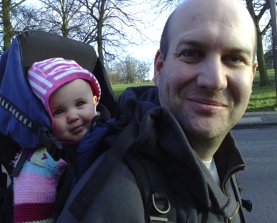Back in March we blogged about a new and intriguing trial published in the European Spine Journal (ESJ) that appeared to demonstrate that for a group of low back pain sufferers, a course of antibiotics may be an effective treatment. We got to this trial early, when it was published online but not yet in print, and we reported it in a gently critical way. Since then so much has happened. The trial was published to great fanfare. Press releases claimed “cure rates” for a substantial proportion of patients. Now, the term “cure rate” in relation to low back pain is very bold indeed and it is bound to draw attention. And that’s before the term “worthy of a Nobel prize” was thrown into the mix.
With all the noise (hubris?) and substantial media coverage of the trial, came critical scrutiny and no small measure of sceptical discussion. Margaret McCartney wrote a great piece for the BMJ that raised some critical questions with regards to aspects of the trial (and kindly cited us!) and also pointed to possible conflicts of interest. The doctor and blogger Benjamin Dean feistily expanded on this latter issue particularly, both in his blog(s) and in letters to the journal’s editor. Others also wrote letters raising various points.
But a new letter just published in the ESJ, the same journal that published the original papers, really caught my eye. In his letter (infuriatingly for public discussion behind a steep paywall), Svend Lings raises 14 questions about the study, the data underlying its basic premise, the methods and results of the trial itself and the issue of possible conflicts of interest. It touches on some very interesting points that I had not begun to consider. For example, is it possible that the initial findings of infection were actually the result of contamination? Why does the study report appear to differ from the trial registry report and, if it is indeed true that infection entered the bloodstream initially from brushing the teeth, and assuming the treatment is itself effective, what happens the next time this happens? Another 100 day course of antibiotics? Is this viable at a population level?
Credit also to the journal editor for publishing it, though I would humbly suggest that this is a discussion that all should see, not just those with academic subscriptions or the means to pay.
Neil O’Connell
 As well as writing for Body in Mind, Dr Neil O’Connell, (PhD, not MD) is a researcher in the Centre for Research in Rehabilitation, Brunel University, West London, UK. He divides his time between research and training new physiotherapists and previously worked extensively as a musculoskeletal physiotherapist.
As well as writing for Body in Mind, Dr Neil O’Connell, (PhD, not MD) is a researcher in the Centre for Research in Rehabilitation, Brunel University, West London, UK. He divides his time between research and training new physiotherapists and previously worked extensively as a musculoskeletal physiotherapist.
He also tweets! @NeilOConnell
Neil’s main research interests are chronic low back pain and chronic pain more broadly with a focus on evidence based practice. He has conducted numerous systematic reviews including some for the Cochrane Collaboration. He also makes a mean Yorkshire pudding despite being a child of Essex.
Link to Neil’s published research here. Downloadable PDFs here.
Reference
Svend Lings (2013). Antibiotics for low back pain? European Spine Journal DOI: 10.1007/s00586-013-2977-0



